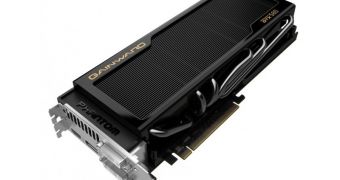Jon Peddie Research found that, during the latest quarter of 2011, NVIDIA was left with a fairly low share of the worldwide graphics market since it doesn't have APUs or anything of that sort.
It was really only a matter of time before processors with integrated graphics really started to push aside add-in boards.
Considering that Intel has been making CPUs with built-in graphics for a while, and AMD has its APUs alive and kicking, this put NVIDIA in a fairly shaky position.
Said position happens to be very delicate in fact, according to Jon Peddie Research, whose latest study shows that AMD and Intel together snatched 83% of this market.
So far, mainstream and high-end graphics are the areas that NVIDIA has managed to handle mostly well.
Now, though, AMD's APUs are clearly invading the mid-range territory and, with low-end add-in cards obsolete, NVIDIA is in a tight spot indeed.
The Santa Clara, California-based GPU maker does have its own weapons though, particularly its ARM-based SoC range which might just make up for the lack of x86-based hybrid processors.
For those that want the precise numbers that Jon Peddie Research compiled, AMD's shipments grew by 9.9% and Intel's by 28.5%. while NVIDIA's declines by 6.2%.
This came to pass even though the discrete graphics market (notebook GPUs) jumped 30% over Q2, because of Optimus working with Sandy Bridge.
All in all, graphics shipments went up by 16% on-quarter, which is above expectations and 18.4% more than what Q3 of 2010 allowed.
During the fourth quarter and especially next year, each company will push ahead with what they can.
AMD will keep developing the Fusion and Bulldozer technologies (bulldozer will get integrated graphics of its own), while Intel will keep improving its own graphics and NVIDIA will bet on its ARM-based SoCs (Kal-El especially).

 14 DAY TRIAL //
14 DAY TRIAL //